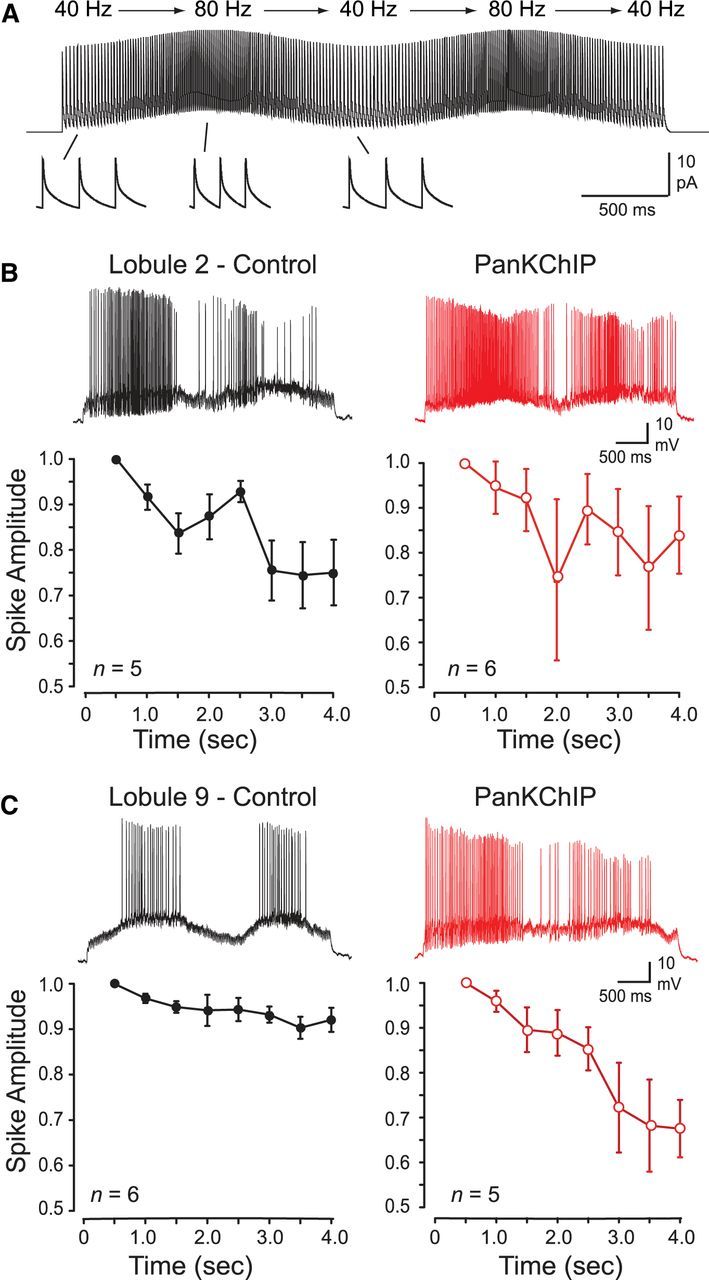Figure 7.

Spike discharge in lobule 9 granule cells is more capable of following MF simEPSPs delivered in a pattern simulating vestibular-like input. A, Example of the train of MF simEPSCs with a pattern shifting in an oscillatory manner between 40–80 Hz. Single EPSCs are shown expanded (bottom). B, C, Recordings during two cycles of oscillatory simEPSP frequencies (as in A) aligned with time points on the abscissa. Left, Spike amplitude in lobule 2 granule cells (B) fails progressively after a second rise in simEPSC frequency but is maintained in lobule 9 granule cells (C). Right, Separate populations of cells show that internal dialysis of a PanKChIP antibody (1:100 dilution) to block the Cav3–Kv4 interaction induces a greater decrease in spike amplitude and frequency-following capability in lobule 9 cells compared with lobule 2 cells. A 500 ms bin width was used to calculate mean spike amplitudes in B and C.
